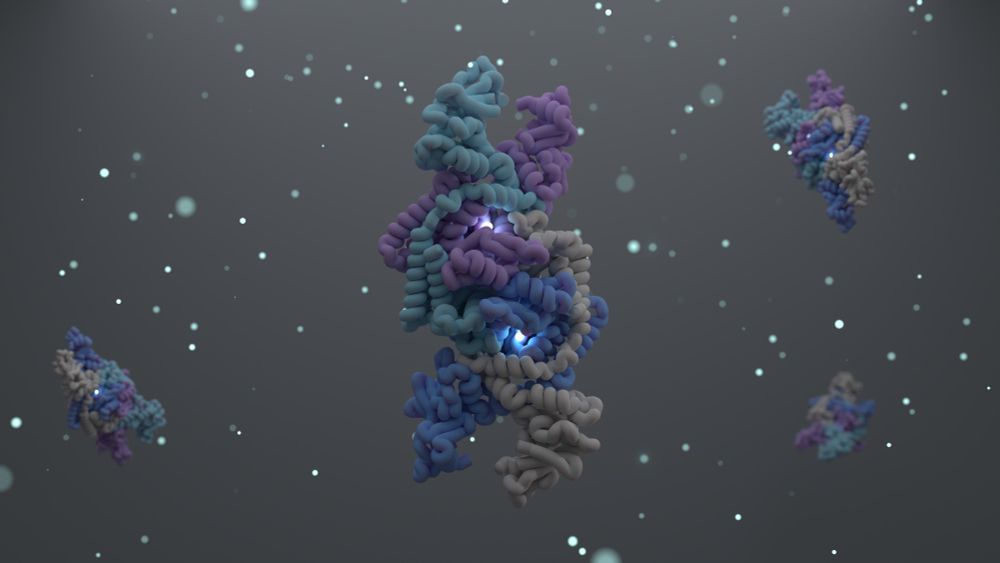
Host-Defence | Structural biology | Single-molecule Biophysics
http://www.loefflab.com

Today in @cellpress.bsky.social we report the structure and function of the Shedu anti-phage defense system.
tinyurl.com/4crj6dnx
A long 🧵...
www.science.org/doi/10.1126/...

www.science.org/doi/10.1126/...
Our HIDEN-SEQ links the "dark matter" genes of your favorite phage to any selectable phenotype, guiding the path from fun observations to molecular mechanisms.
A thread 1/8

Our HIDEN-SEQ links the "dark matter" genes of your favorite phage to any selectable phenotype, guiding the path from fun observations to molecular mechanisms.
A thread 1/8
www.science.org/doi/10.1126/...

www.science.org/doi/10.1126/...
Meet MetaEdit: a platform for pathway-scale metagenomic editing inside the gut microbiome. science.org/doi/10.1126/...

Meet MetaEdit: a platform for pathway-scale metagenomic editing inside the gut microbiome. science.org/doi/10.1126/...
Thanks to wonderful coauthors/collaborators/friends, the whole @doudna-lab.bsky.social and everyone at @innovativegenomics.bsky.social

Thanks to wonderful coauthors/collaborators/friends, the whole @doudna-lab.bsky.social and everyone at @innovativegenomics.bsky.social
@natmicrobiol.nature.com
#phagesky #phage #microsky
www.nature.com/articles/s41...

@natmicrobiol.nature.com
#phagesky #phage #microsky
www.nature.com/articles/s41...
Here’s the story of how we discovered the Metis defense system 👇
www.biorxiv.org/content/10.1...

www.nwo.nl/en/news/nati...
www.nwo.nl/en/news/nati...
Now, a new study shows the same for a plant NLR. Another example how principles of immunity remain conserved from bacteria to eukaryotes

Now, a new study shows the same for a plant NLR. Another example how principles of immunity remain conserved from bacteria to eukaryotes

Today, we report the discovery of telomerase homologs in a family of antiviral RTs, revealing an unexpected evolutionary origin in bacteria.
www.biorxiv.org/content/10.1...

Today, we report the discovery of telomerase homologs in a family of antiviral RTs, revealing an unexpected evolutionary origin in bacteria.
www.biorxiv.org/content/10.1...
Ever wondered how bacteria fight off viruses? We’re looking for a PhD student to dive into the molecular basis of newly discovered microbial immune systems, an area of biology where much remains to be uncovered.
RT/share to help us find our next team member!
www.lumc.nl/en/about-lum...

@roisnehamelinf.bsky.social & co discovered that Wadjet, an SMC complex involved in bacterial DNA immunity, performs some impressive molecular gymnastics 🤸♂️🤸♂️🤸♂️.
Check out the new paper: www.cell.com/molecular-ce...

@roisnehamelinf.bsky.social & co discovered that Wadjet, an SMC complex involved in bacterial DNA immunity, performs some impressive molecular gymnastics 🤸♂️🤸♂️🤸♂️.
Check out the new paper: www.cell.com/molecular-ce...
Check out @erinedoherty.bsky.social and my work from @doudna-lab.bsky.social lab here:
www.nature.com/articles/s41...

Check out @erinedoherty.bsky.social and my work from @doudna-lab.bsky.social lab here:
www.nature.com/articles/s41...

Ever wondered how bacteria fight off viruses? We’re looking for a PhD student to dive into the molecular basis of newly discovered microbial immune systems, an area of biology where much remains to be uncovered.
RT/share to help us find our next team member!
www.lumc.nl/en/about-lum...

Ever wondered how bacteria fight off viruses? We’re looking for a PhD student to dive into the molecular basis of newly discovered microbial immune systems, an area of biology where much remains to be uncovered.
RT/share to help us find our next team member!
www.lumc.nl/en/about-lum...
www.science.org/doi/10.1126/...

www.science.org/doi/10.1126/...
Organized by the #NVBMB (associated with KNCV)
Organized by the #NVBMB (associated with KNCV)
@ruoshiz.bsky.social @milot.bsky.social
www.nature.com/articles/s41...

@ruoshiz.bsky.social @milot.bsky.social
www.nature.com/articles/s41...
We just published in @natbiotech.nature.com:
👉 Targeted DNA ADP-ribosylation triggers templated repair in bacteria and base mutagenesis in eukaryotes
doi.org/10.1038/s415...

We just published in @natbiotech.nature.com:
👉 Targeted DNA ADP-ribosylation triggers templated repair in bacteria and base mutagenesis in eukaryotes
doi.org/10.1038/s415...
Defence systems encoded by core genomic islands of seventh pandemic Vibrio cholerae royalsocietypublishing.org/doi/10.1098/...

Defence systems encoded by core genomic islands of seventh pandemic Vibrio cholerae royalsocietypublishing.org/doi/10.1098/...
www.biorxiv.org/content/10.1...

www.biorxiv.org/content/10.1...
With a great preview by @kevincorbett.bsky.social & @amardeeep.bsky.social highlighting the potential of Wadjets:
Wadjet—Keeping a watchful eye on circular DNA.
www.cell.com/structure/fu...
With a great preview by @kevincorbett.bsky.social & @amardeeep.bsky.social highlighting the potential of Wadjets:
Wadjet—Keeping a watchful eye on circular DNA.
www.cell.com/structure/fu...
Our approach allows silencing defense systems of choice. We show how this approach enables programming of “untransformable” bacteria, and how it can enhance phage therapy applications
Congrats Jeremy Garb!
tinyurl.com/Syttt
🧵

Our approach allows silencing defense systems of choice. We show how this approach enables programming of “untransformable” bacteria, and how it can enhance phage therapy applications
Congrats Jeremy Garb!
tinyurl.com/Syttt
🧵

